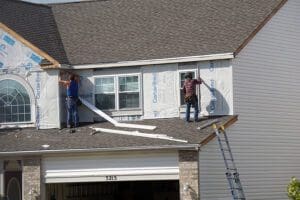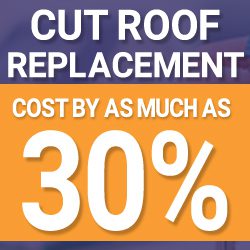
The Ultimate Guide to Roofing Materials: Durability, Cost, and Aesthetics
As a homeowner, selecting the right roofing material is a critical decision that affects not only the aesthetics of your home but also its durability, cost-effectiveness, and overall value. At Best Roofing Estimates, we understand the importance of making an informed choice. This guide aims to provide comprehensive insights into the most popular roofing materials, helping you weigh their durability, cost, and aesthetic appeal.
Asphalt Shingles: The Popular Choice
Asphalt shingles are arguably the most common roofing material in the United States, renowned for their cost-effectiveness and versatility. They are made of a fiberglass or organic base coated with asphalt and granules. The key advantages of asphalt shingles lie in their affordability and the variety of styles and colors available. They are suitable for most residential applications and are relatively easy to install and repair. However, their lifespan is shorter compared to other materials, typically ranging from 15 to 30 years. They offer moderate insulation and are reasonably durable, though they can be susceptible to wind and hail damage.
Metal Roofing: Durability and Efficiency
Metal roofs, encompassing materials like aluminum, steel, copper, and zinc, are celebrated for their longevity and durability. A metal roof can last anywhere from 40 to 70 years, depending on the material. They are highly resistant to weather elements, fire, and pests. Additionally, metal roofs are energy-efficient as they reflect solar radiant heat, which can reduce cooling costs. On the downside, metal roofing can be more expensive upfront and require professional installation. Aesthetically, they offer a sleek, modern look and can be manufactured in a variety of colors and styles.
Clay and Concrete Tiles: Timeless Elegance
Clay and concrete tiles are favored for their aesthetic appeal and durability. They can last over 50 years and are particularly popular in regions with a Mediterranean or Spanish architectural style. Clay tiles are known for their distinct terra cotta color, while concrete tiles can be colored to suit various aesthetic preferences. These materials are highly fire-resistant and can withstand harsh weather conditions. However, they are among the more expensive roofing options and require a reinforced roof structure due to their weight. They also necessitate professional installation.
Slate Roofing: The Premium Choice
Slate roofing is synonymous with premium quality and longevity, often lasting over 100 years. It is made from natural slate rock and is known for its unique and elegant appearance. Slate is extremely durable, fire-resistant, and environmentally friendly, as it is a natural material. However, it is also one of the most expensive roofing options and requires a sturdy roof structure due to its weight. Installation should be carried out by professionals experienced in slate roofing.
Wood Shingles and Shakes: Natural Beauty
Wood shingles and shakes offer a natural, rustic look that is particularly appealing in certain architectural styles. Shingles are machine-cut and have a more uniform appearance, while shakes are hand-cut and more rugged. Wood roofing is relatively light but requires regular maintenance to prevent decay, mold, and insect damage. It provides good insulation but is less fire-resistant than other materials unless treated with fire retardants. Cedar and redwood are common choices for their durability and resistance to rot.


Synthetic Roofing: The Innovative Alternative
Synthetic roofing materials, such as rubber, plastic, and polymer, are relatively new in the market. They are designed to mimic the appearance of natural materials like slate or wood but at a lower cost and with less maintenance. Synthetic roofs are lightweight, durable, and often made from recycled materials, making them an eco-friendly option. They are also resistant to weather elements and fire. The longevity of synthetic roofing is still being evaluated, but they generally come with long warranties.
Choosing the right roofing material is a significant decision that affects your home’s protection, appearance, and value. At Best Roofing Estimates, we recommend considering the long-term implications of your choice in terms of durability, maintenance, and energy efficiency. Each material has its unique advantages and limitations, and the best choice depends on your specific needs, budget, and aesthetic preference.
Remember, a good roofing material not only protects your home from the elements but also enhances its overall appeal and value. We hope this guide assists you in making an informed decision. For personalized advice and connections to top-notch roofing contractors, feel free to reach out to us at Best Roofing Estimates.
The Impact of Climate on Your Roof: Choosing the Right Roof for Different Climates
Understanding the impact of local climate on your roofing material is essential for ensuring the longevity and performance of your roof. Different climates pose unique challenges and necessitate specific roofing materials for optimal protection and efficiency. At Best Roofing Estimates, we emphasize the importance of matching roofing materials to your climatic conditions.
Hot and Sunny Climates
In areas with high temperatures and intense sun exposure, roofing materials that can reflect sunlight and withstand UV radiation are ideal. Metal roofing is an excellent choice for such climates due to its high reflectivity and ability to keep homes cooler, thus reducing air conditioning costs. Light-colored tiles, whether clay, concrete, or slate, can also reflect heat effectively. Synthetic roofing materials designed to mimic traditional materials while providing better heat reflection and UV resistance are another viable option.
Cold and Snowy Climates
Regions that experience heavy snowfall and colder temperatures require roofing materials that provide excellent insulation and can bear the weight of snow. Slate and metal roofs are beneficial in these climates, as they are durable and can shed snow easily. Additionally, asphalt shingles with a suitable underlayment can provide the necessary insulation and withstand cold temperatures. For wooden shingles and shakes, it’s crucial to ensure they are adequately treated to resist moisture and freezing conditions.
Windy and Storm-Prone Areas
In areas prone to strong winds, hurricanes, or frequent storms, the roofing material must be able to withstand high winds and potential debris impact. Metal roofs are often rated for high wind resistance, making them a suitable choice. Architectural asphalt shingles that are thicker and more durable than standard shingles can also be effective. It is crucial to ensure that whatever material you choose, it is installed with enhanced techniques to improve wind resistance, such as using more nails or specialized fastening systems.





Humid and Rainy Climates
High humidity and frequent rains can lead to moisture-related issues such as mold, algae growth, and rot. In such environments, it’s essential to choose roofing materials that are resistant to moisture and can provide adequate ventilation. Metal roofing, slate, and tiles (both clay and concrete) are excellent choices as they resist moisture penetration and don’t rot. For wood shingles, choosing rot-resistant varieties like cedar and ensuring proper treatment is key. Additionally, incorporating good attic ventilation is vital to prevent moisture accumulation regardless of the chosen material.


Coastal Areas
Coastal environments present the challenge of salt air, which can corrode certain materials. Corrosion-resistant materials like aluminum or specialized metal roofing treatments are ideal in these settings. Slate and tile roofs can also perform well, but it’s crucial to ensure the underlayment and fasteners are designed to resist corrosion. Regular maintenance is also more critical in coastal areas to address any corrosion or damage promptly.
The choice of roofing material in relation to climate is a pivotal decision that impacts the durability and effectiveness of your roof. At Best Roofing Estimates, we understand that the right roofing material not only stands up to the local weather conditions but also contributes to the energy efficiency and comfort of your home. We encourage homeowners to consider the unique aspects of their local climate when choosing their roofing material.
For further assistance and expert advice tailored to your specific climatic needs and preferences, fill out a form below. Our team is dedicated to helping you find the perfect roofing solution that ensures longevity, efficiency, and aesthetic appeal, no matter where you live.



Leave a Reply